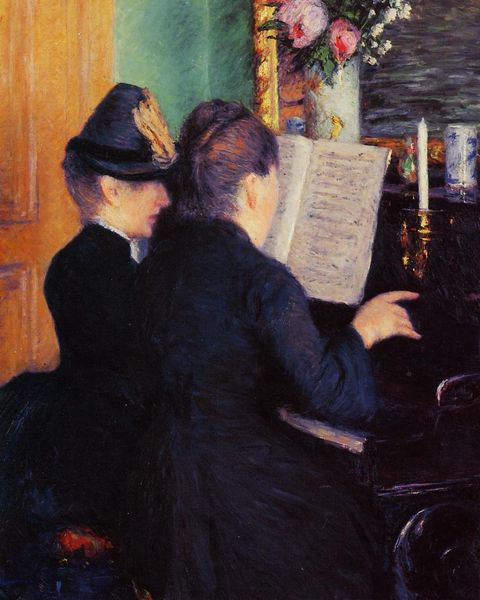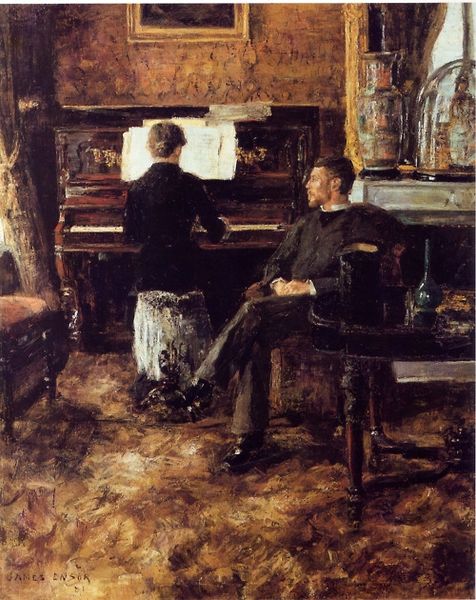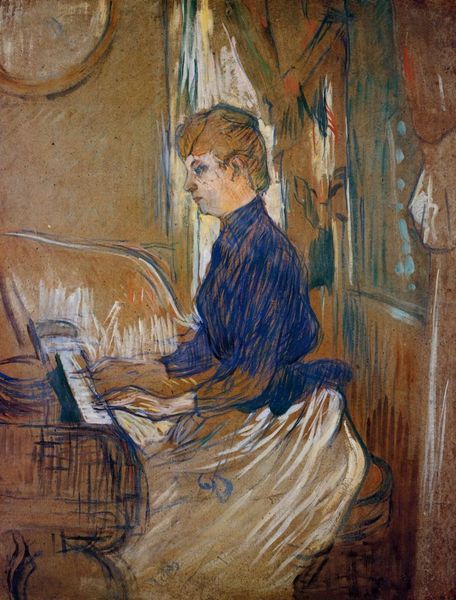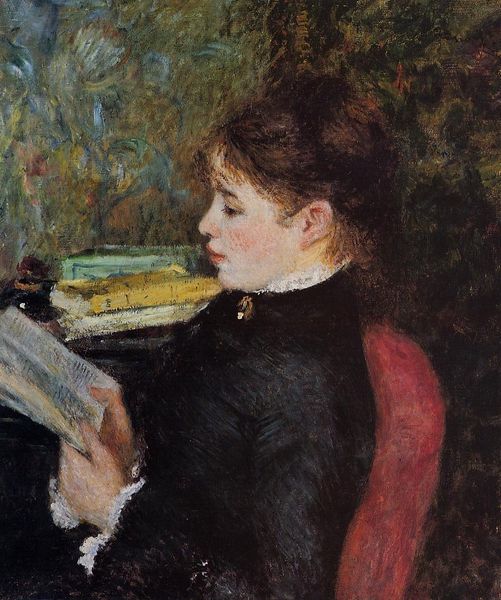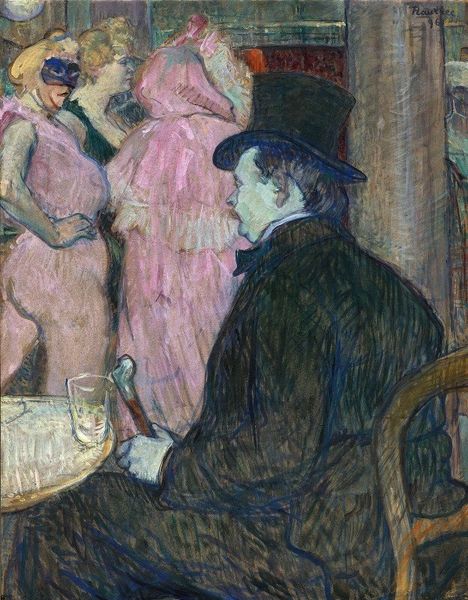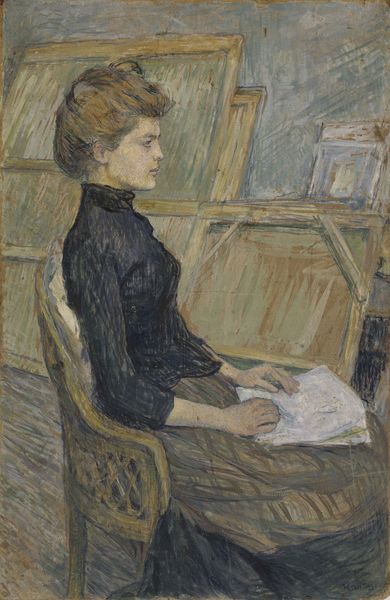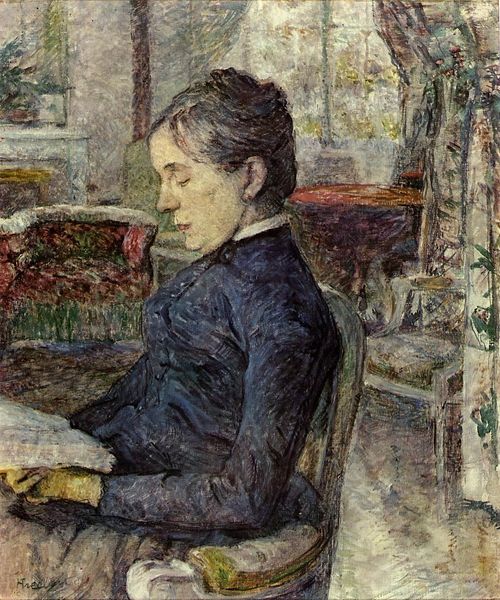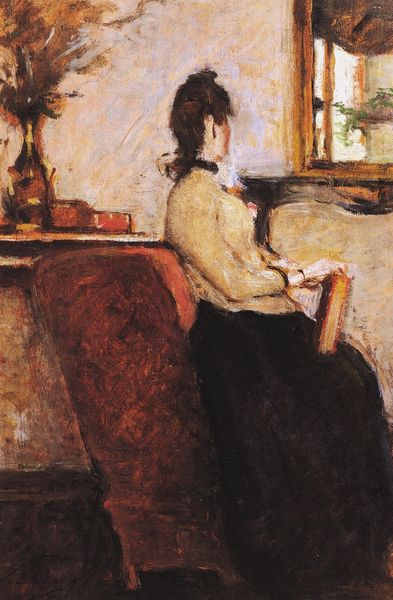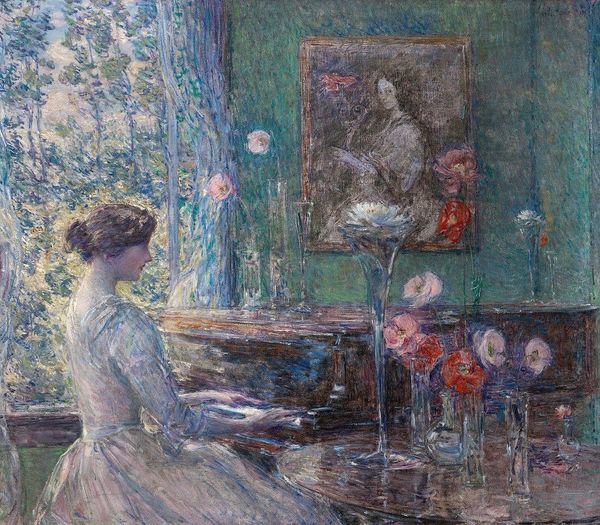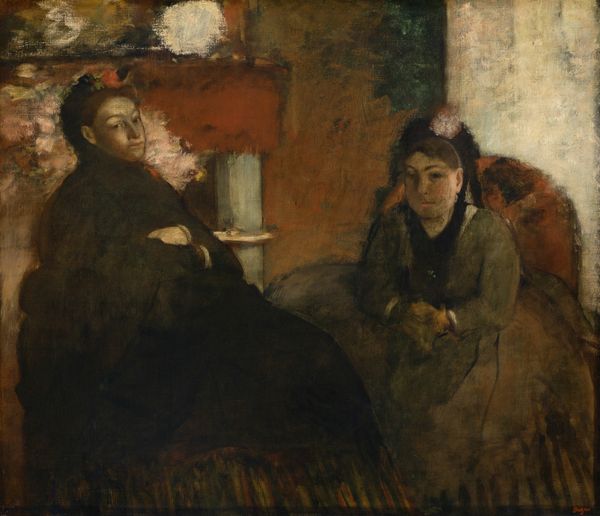
The Singing Lesson. (The Teacher, Mlle.Dihau, with Mme.Faveraud) 1898
0:00
0:00
henridetoulouselautrec
Mohamed Mahmoud Khalil Museum, Cairo, Egypt
Dimensions: 75.7 x 69 cm
Copyright: Public domain
Curator: Henri de Toulouse-Lautrec's "The Singing Lesson" from 1898 gives us an intimate glimpse into a private musical session. What catches your eye? Editor: Immediately, it's the contrast. The intense, almost oppressive red background pushing against the shadowed figures. It feels claustrophobic, almost conspiratorial. Curator: Yes, that vibrant red! In paintings like this, the color red may embody diverse symbolic weight, potentially connoting emotional intensity and perhaps social commentary. In cultural contexts, such vivid hues are employed to stimulate responses related to both joy and danger. Do these elements intertwine for you here? Editor: Absolutely. It speaks volumes about the role of women and performance during that time. It suggests constraint, as if their creative expression is occurring under watchful eyes within narrow social confines. It’s ripe with the tension of potential. Curator: Toulouse-Lautrec painted many images featuring women musicians. This specific picture presents Mademoiselle Dihau with Madame Faveraud during a vocal training session. Editor: Beyond the genre scene, I am seeing what is omitted as being significant. Consider how their individuality—the student's bent head and the teacher's side-eye glances—may be interpreted as a hint of interior conflict beneath social expectations. Curator: I find compelling how, while post-Impressionist painters broke away from naturalistic color, the scene remains grounded in realistic form, with some elements almost dreamlike. What symbolic potential is there? Editor: Think about it in terms of gender and performance—the female performer navigating the space between personal passion and the controlled execution of skill. Curator: Such cultural undertones are deeply rooted within those choices made by the painter. To bring our minds back to that turn-of-the-century salon scene, to see the colors, that dark piano. And more widely, those echoes speak across periods and societal barriers even now. Editor: I see these threads as very relevant, given our culture’s present discourses about female agency and the complexities around creative production. What emerges is not only a snapshot of a historic moment but something that echoes deeply.
Comments
No comments
Be the first to comment and join the conversation on the ultimate creative platform.
